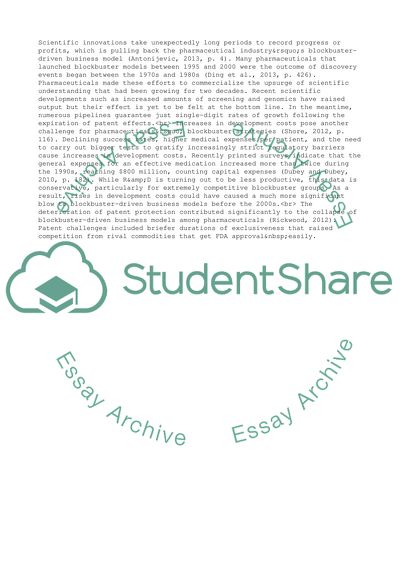Cite this document
(“Challenges to the pharmaceutical industrys blockbuster-driven business Essay”, n.d.)
Challenges to the pharmaceutical industrys blockbuster-driven business Essay. Retrieved from https://studentshare.org/business/1624219-challenges-to-the-pharmaceutical-industrys-blockbuster-driven-business-model-and-the-effectiveness-of-glaxosmithklines-strategies-for-meeting-these-challenges
Challenges to the pharmaceutical industrys blockbuster-driven business Essay. Retrieved from https://studentshare.org/business/1624219-challenges-to-the-pharmaceutical-industrys-blockbuster-driven-business-model-and-the-effectiveness-of-glaxosmithklines-strategies-for-meeting-these-challenges
(Challenges to the Pharmaceutical Industrys Blockbuster-Driven Business Essay)
Challenges to the Pharmaceutical Industrys Blockbuster-Driven Business Essay. https://studentshare.org/business/1624219-challenges-to-the-pharmaceutical-industrys-blockbuster-driven-business-model-and-the-effectiveness-of-glaxosmithklines-strategies-for-meeting-these-challenges.
Challenges to the Pharmaceutical Industrys Blockbuster-Driven Business Essay. https://studentshare.org/business/1624219-challenges-to-the-pharmaceutical-industrys-blockbuster-driven-business-model-and-the-effectiveness-of-glaxosmithklines-strategies-for-meeting-these-challenges.
“Challenges to the Pharmaceutical Industrys Blockbuster-Driven Business Essay”, n.d. https://studentshare.org/business/1624219-challenges-to-the-pharmaceutical-industrys-blockbuster-driven-business-model-and-the-effectiveness-of-glaxosmithklines-strategies-for-meeting-these-challenges.


